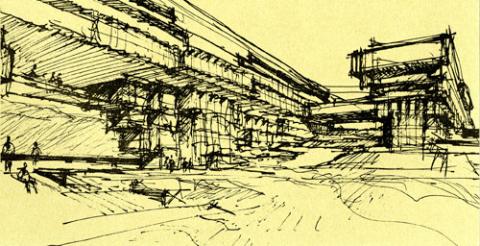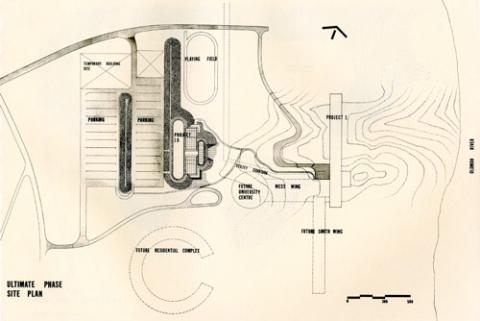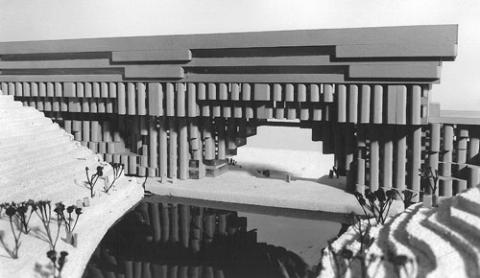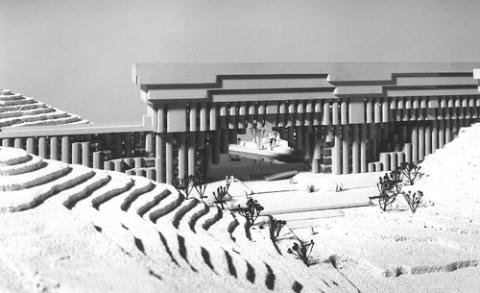Implementation
Thus, to maintain harmony with the land, one must submit to its rules. One must use space generously or not at all. Buildings must grow out of the ground, clustered with other buildings or trees, but never sit blatantly on top of the ground. Forms must be simple and geometrically concise, as elaborate forms and fussy detail show as weakness. As the geometry of the section measures out the landscape, one must work with an equally clear geometry or appear indecisive. Just as the prairie landscape has been reduced to essentials, so must its buildings be elemental.
Erickson/Massey, 1969
Procedure for Implementation
Section VII of the Development Plan report discusses how decisions could be made to evaluate which elements of the plan should be constructed initially and suggests such decisions can only be made after evaluation of the following factors:
- The initial facilities should provide basic academic space.
- The University has set out in its user`s report the space needs for a 220 student population.
- The total budget for Project 1 (University Hall) is twelve million ($12M) dollars.
- The construction in Phase I must be effecient and economical, since time and budget are particular constraints.
- Expansion beyond Project 1, likely occuring as a continual process, should be simple and direct.
The initial recommendation is that the two structures connecting the coulees should proceed first, since they provide basic teaching space, connect the upper land area, include student residence space programmed at the initial stage and can be constructed in the coulees with less difficulty initially.

Early twin-section conceptual sketch of Project 1 (later to evolve into the north section, University Hall)

Initial Implementation of Projects 1 (University Hall), 1A (Physical Education) and proposed ultimate phases.


Initial conceptual model photographs for academic facilities containing appropriately scaled spaces for learning and living.
